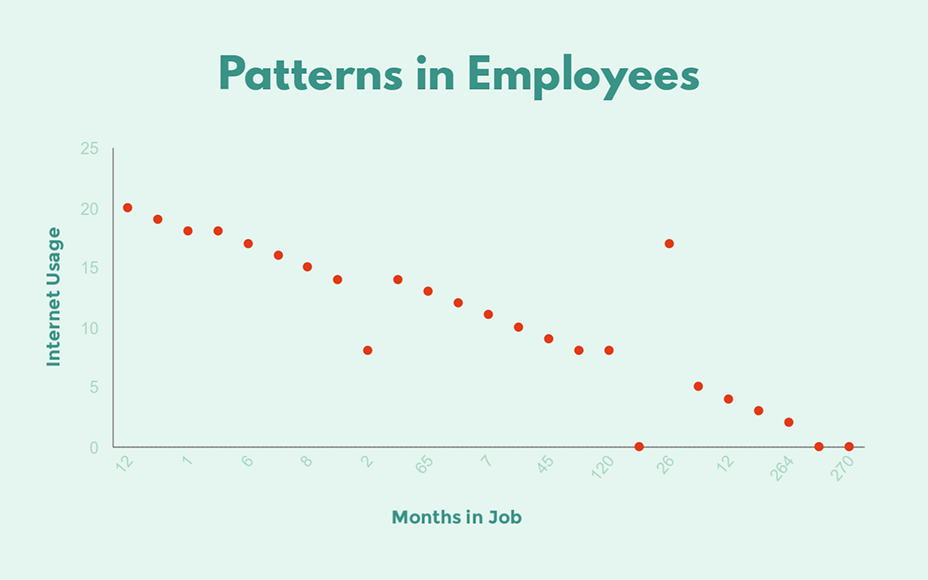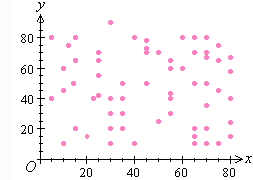

The scatter plot with positive correlation is also known as a “Scatter Diagram with Positive Slant.” In this case, as the value of X increases, the value of Y will increase too, which means that the correlation between the two variables is positive. According to the correlation, scatter plots are divided into the following three categories. You can classify a scatter plot in many ways the most popular one is based on correlation and is extensively used in project management. The dots’ positions are determined by the completion date and how long it is required for the Kanban card to reach the “Done” column. Each dot that you see scattered across the chart is a marker representing a task within a card on your Kanban board. The vertical one represents the cycle time of the completed tasks during this period calculated in days. The horizontal axis of the chart visualizes a selected time frame by dates. The structure of this chart is very similar to that of a typical scatterplot. The goal of the cycle time scatterplot is to visualize the cycle time of your team’s assignments within a predefined time frame. Cycle time represents how long it takes to get things done for individual items on your Kanban boards. It is revered in the Lean management world because it provides a very detailed picture of one of the key metrics in Lean – cycle time. The cycle time scatterplot is an adapted version of the scatterplot chart. In Kanban, it is called cycle time scatterplot. Yes, you can use a scatterplot chart to forecast cycle time on a Kanban board.

Can You Use a Scatterplot Chart to Forecast Cycle Time on a Kanban Board? The scatter diagram is used in many sectors such as in Lean management to determine root cause analysis, in Economics to illustrate relationships between two economic phenomena, such as employment and output, in Management to visualize how product inventories affect costs or delivery times, in Market Research to illustrate, for example, the relationship between advertising methods and sales. Scatter diagrams are used when you want to demonstrate the relationship between two variables or when you have to identify data patterns.

This results in the different data points overlapping, making it challenging to identify the relationship between variables.

Overplotting exists when too many data points have been plotted. The most important thing to remember when we talk about correlation is that it doesn’t mean that the changes observed in one variable are responsible for the changes observed in another variable. There are two common challenges that come with the use of scatter diagrams – the interpretation of causation as correlation and overplotting. The scatter diagram will visualize in an easy to observe way if the data points are positively correlated, negatively correlated, or there is no correlation between the two variables. Scatter diagrams are used and applied in several ways, where the most important benefit is showing the correlation between two variables. The scatter diagram is one of the seven basic quality tools used in root cause analysis. The better the correlation, the tighter the points will hug the line. If the variables are correlated, the points will fall along the line or curve. The scatter diagram graphs pairs numerical data with one variable on each axis to look for a relationship between them. A scatter diagram is a two-dimensional graphical representation of a set of data. The scatter diagram is also called a scatter plot chart, XY chart, and correlation chart.
#No association scatter plot update#
Integrate with external systems to get the most out of your Kanban softwareĬreate and update cards via email and reply to emails by adding a comment Reduce multitasking, alleviate bottlenecks, and keep a steady flow of work Visualize and track cross-team dependencies via card linksĬreate probabilistic plans for future project deliveryĪutomate your process to trigger actions when certain events occurĪnalyze your workflow’s performance through a variety of Lean/Agile charts Implement OKRs and align your strategy with day-to-day executionĭisplay critical business metrics and gather reports in one placeĬustomize your work items as needed and enhance communication Visualize your past, current, and future initiatives or projectsĭistribute and track work across the entire organization Keep your teams' work in a single place with multi-layered Kanban boards Keep track of tasks and get accurate status reports in real-timeĬreate a network of interlinked Kanban boards on a team and management level


 0 kommentar(er)
0 kommentar(er)
